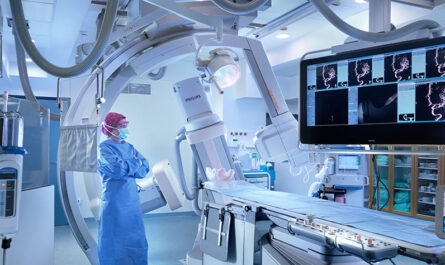
Gas chromatography (GC) is an analytical technique used for separating and analyzing compounds that can be vaporized without decomposition. It relies on the fact that different compounds move through a gas chromatograph column at different rates depending on their various chemical and physical properties and their interaction with the column lining. GC is used in many industries and laboratories for quantitative and qualitative chemical analysis of volatile compounds.
Principle of Gas Chromatography
The basic principle of gas chromatography involves an inert gaseous mobile phase which carries the vaporized sample components through a stationary phase (column). The column is typically a coiled capillary tube or helix contained in an oven. The stationary phase coating on the interior tube wall interacts differently with each component in the mixture. This results in the components spending different amounts of time in the column before exiting. The separation is achieved based on the differences in partitioning behavior of analytes between the mobile (gas) and stationary phases. Substances which interact strongly with the stationary phase progress slowly and spend more time in the column compared to those with weaker interactions.
Components of a Gas Chromatograph
A basic gas chromatograph consists of the following major components:
– Carrier gas: An inert, non-reactive gas like helium, hydrogen or nitrogen that carries the vaporized sample through the system.
– Injection port: Where the sample is introduced into the hot carrier gas stream. It provides volatilization and vaporization of the sample.
– Column: Made of fused silica tubing or stainless steel packed with or coated on the inside with a stationary phase. This is where the separation occurs.
– Oven: Houses and heats the column to precise temperatures required for separation. Temperature programming is commonly used.
– Detector: Used to sense and measure properties of exiting sample components. Common detectors include flame ionization, thermal conductivity, and mass spectrometer.
– Data system: Processes signals from the detector and produces a chromatogram. Used for analysis and identification of components.
Column Technologies in GC
The main column technologies used are packed columns and capillary columns. Packed columns contain particulate stationary phases like diatomaceous earth or porous polymers packed tightly inside stainless steel tubing. Capillary columns consist of a very thin capillary tube with a stationary phase coated or chemically bonded as a film to the inner wall instead of filling the tube. Capillary columns offer higher efficiencies and resolutions along with simpler construction and installation compared to packed columns.
Sample Introduction Techniques
The main methods of sample introduction in GC are:
– Direct injection: Simply inserting a syringe with liquefied sample into the hot injection port.
– Headspace analysis: Used especially for volatile components. The sample vial is heated and the vapors above are injected indirectly without direct contact.
– On-column injection: Injecting the sample directly onto the column head through an injector port.
– Splitless/split injection: Minimizing sample loss for trace analysis using a split/splitless injector which can direct the entire sample or a fraction to the column.
Applications of Gas Chromatography
Some common applications of gas chromatography include:
– Petroleum analysis: Used to analyze composition of crude oil, gasoline, diesel, etc. Provides data on fractions for refining.
– Environmental analysis: Detection of pollutants, pesticides, and volatile organic compounds in air, water, and soil samples.
– Food analysis: Quantitative analysis of flavors, fragrances, nutrients, and contaminants in food and beverages.
– Forensic analysis: Analysis of body fluids, fibers, ignitable liquids, drugs, and poisons for forensic investigative purposes.
– Chemical analysis: Identification and quantification of components in chemicals, pharmaceuticals, polymers, perfumes and more.
– Biomedical analysis: Metabolic profiling, screening for inborn errors of metabolism from patient samples.
Advantages and Limitations of Gas Chromatography
The advantages of GC include high resolution capability, reproducibility, good detection limits, wide range of compatible columns and detectors. However, it has limitations like requirement of volatile or thermally-stable analytes, lengthy sample preparation steps sometimes, and inapplicability below molecular weight of 20-30 Da. Overall, GC has proven to be a powerful and versatile separation technique across many application areas thanks to continued technological advancements.
Conclusion
In this article, we discussed the basic principles and components of a gas chromatograph. The major column technologies and sample introduction methods were outlined. Key applications of GC technique were highlighted in various industries. The advantages as well as typical limitations of gas chromatography as an analytical technique were reviewed. GC has made invaluable contributions in separation sciences and will continue to be adopted widely owing to its high efficiency, reliability and applicability to thermal-stable analytes.
*Note:
1. Source: Coherent Market Insights, Public sources, Desk research
2. We have leveraged AI tools to mine information and compile it


